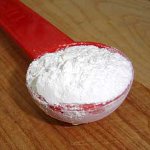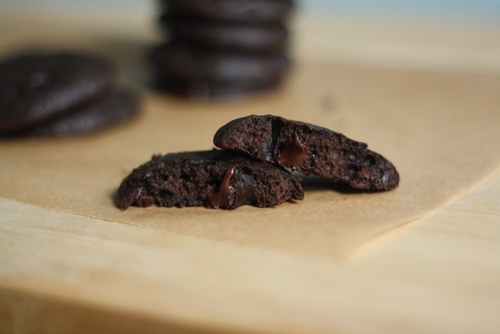How to replace the baking powder?

When preparing a baked yeast batch in a doughOften add a baking powder (baking powder), which gives finished products greater splendor. Baking powder can be bought in the store, but what if it suddenly was not at hand at the right time? How to replace the baking powder?
The effect of the disintegrant is based on the release of carbon dioxide: when baking, the bubbles of gas that are released "evenly" raise the dough, resulting in a more loose and lush baking. Carbon dioxide is released during the reactioncomponents of baking powder - acidic and basic salts. Also, the powder contains a filler that does not allow the salts to react before they enter the dough.
It is preferable to use ready-made baking powder, in which the proportions of the ingredients are correctly balanced, but if you suddenly forget or could not get it, you can replace the baking powder with a composition of own preparation.
In the classical version baking powder consists of from baking soda (125 g), tartar (250 g),Ammonium carbonate (20 g) and rice flour (25 g). But it is unlikely that these ingredients (except for baking soda) will be found in the kitchen of every mistress. Therefore, you can replace the baking powder with a mixture of more accessible ingredients.
To do this, you need in equal proportions take baking soda, citric acid and starch, flour or powdered sugar (or a mixture thereof). Also other variants of proportions - 12 parts of flour or other filler, 5 parts of soda and 3 parts of citric acid or 4 parts of filler, 2 parts of soda and 1 part of citric acid.
With the ratio of ingredients you can experiment, the main thing is that the finished products do not taste the soda (this happens if the soda in the disintegrant is too much, so that part of it does not react and remains in the dough in its original form).
All components for the preparation of a domestic baking powder must be completely dry: when contact with water, prematurereaction. If you prepare a baking powder with a stock, you can not mix the ingredients, but pour them into a glass or porcelain jar in layers so that the layers of reagents are separated by a layer of filler (for example, a layer of soda-a layer of flour-a layer of citric acid). Store the baking powder in a sealed container in a place protected from light.
Can replace the disintegrant and simply baking soda, but only if the test contains ingredients that have an acidic reaction: sour-milk products, fruit purees orjuices, citric acid or vinegar, honey, chocolate and some others. In this case, the amount of soda is most likely to be determined experimentally, but usually its volume should be less than the volume of the disintegrant indicated in the recipe approximately twice.
You can also try replace baking powder with soda, vinegar or citric acidBecause soda itself is not tooA good baking powder, even if the test contains products containing acid. A quenching of soda ensures that the desired reaction with the release of carbon dioxide will still occur. In this case, the practice of extinguishing soda before introducing it into the dough has become the subject of a fierce debate.
Some mistresses believe that to quench sodaVinegar before making the dough is meaningless, as carbon dioxide evaporates even before baking. Others object to them that the reaction continues after the introduction of soda into the dough (if you take enough soda). What can I advise here? After extinguishing the soda with vinegar, enter it into the dough immediately, without waiting for the end of the brewing, and immediately put the dough in the oven. Some housewives extinguish soda when preparing a biscuit dough, and do not quench when preparing a sandwich.
If at the right time you did not have a baking powder at your fingertips, do not be discouraged: you can always replace the baking powder with products that are sure to be found in your kitchen.
 </ center?
</ center? 












